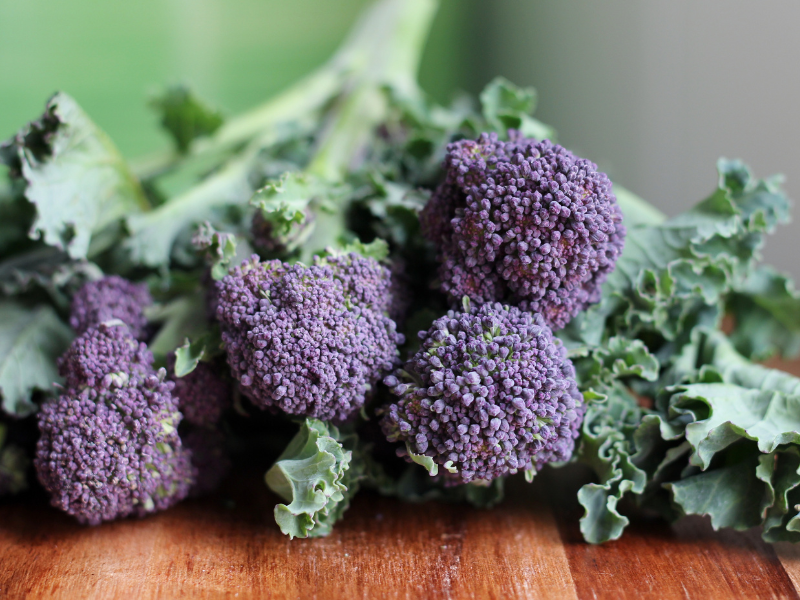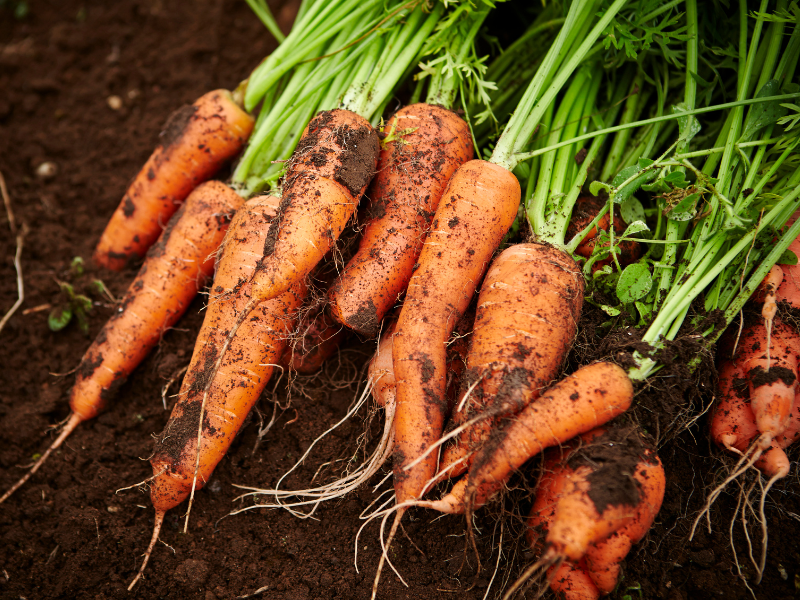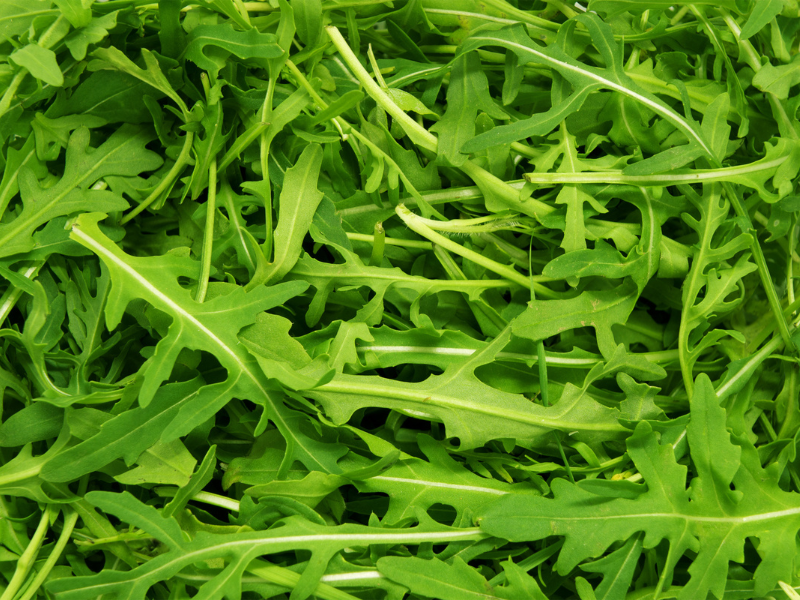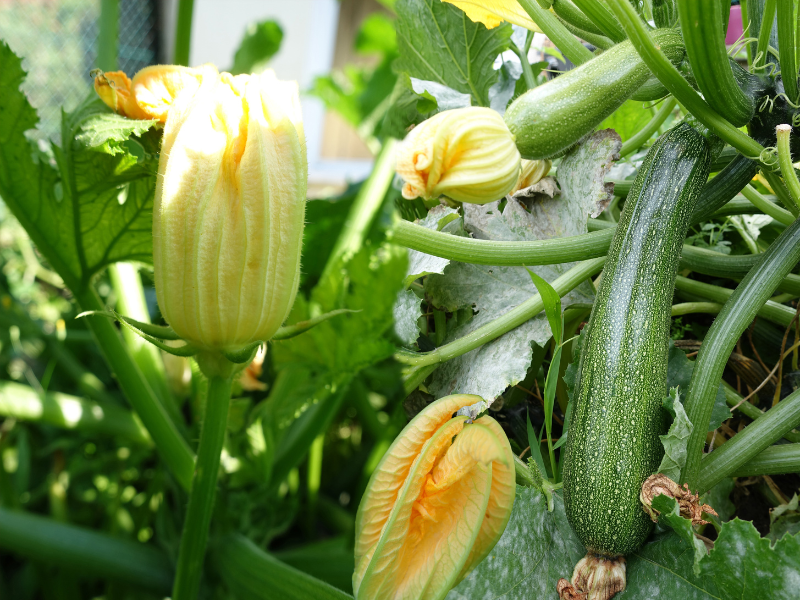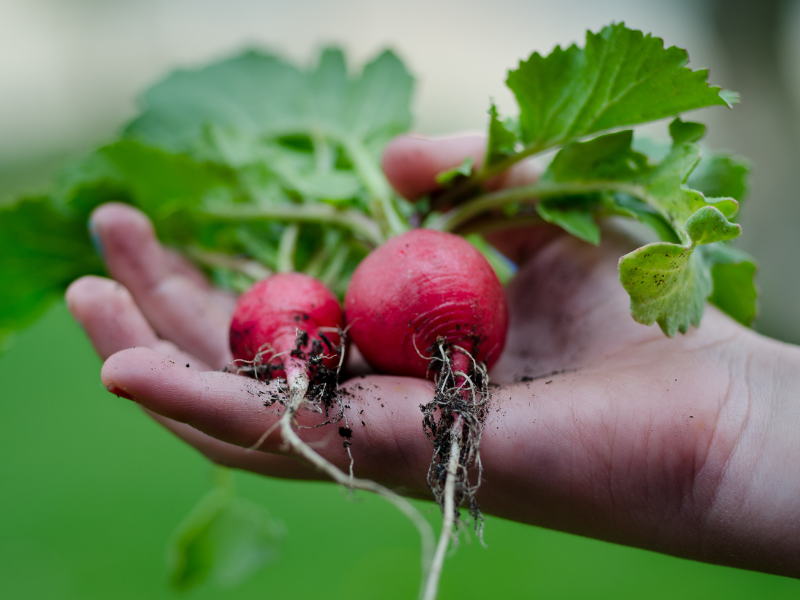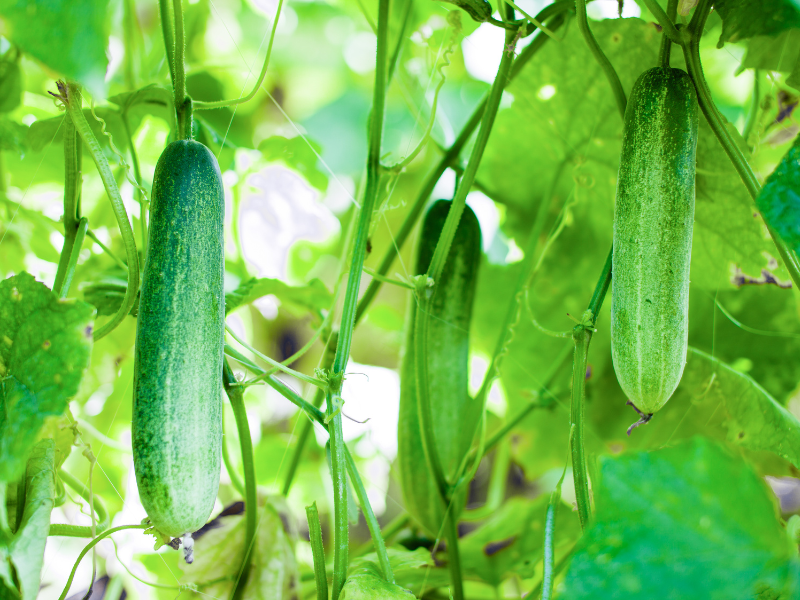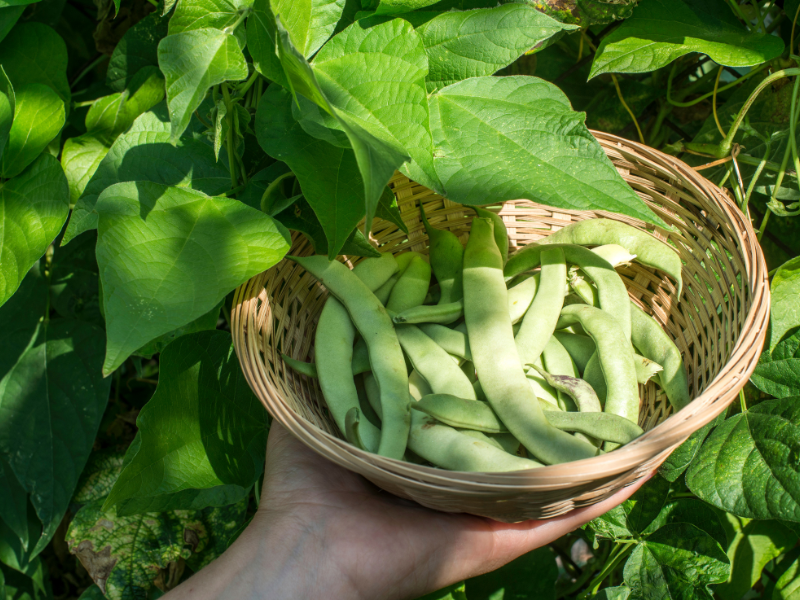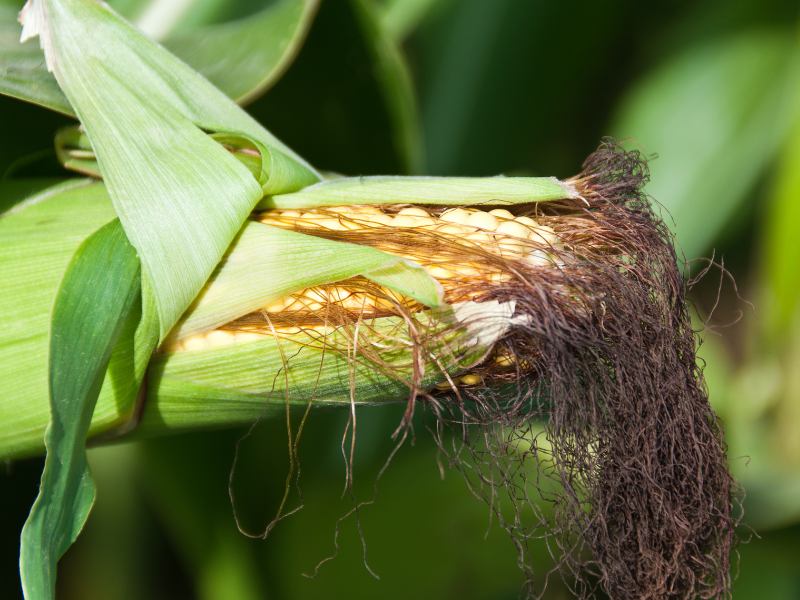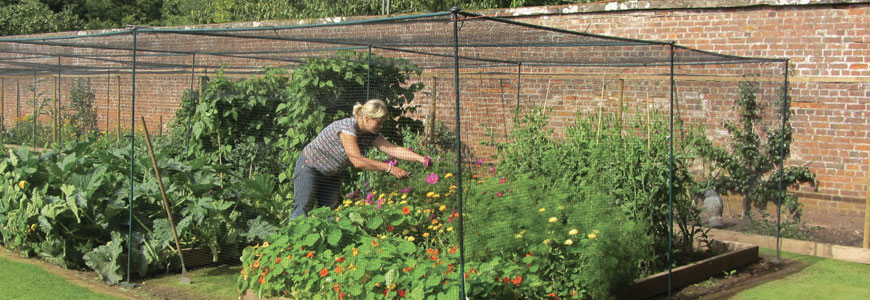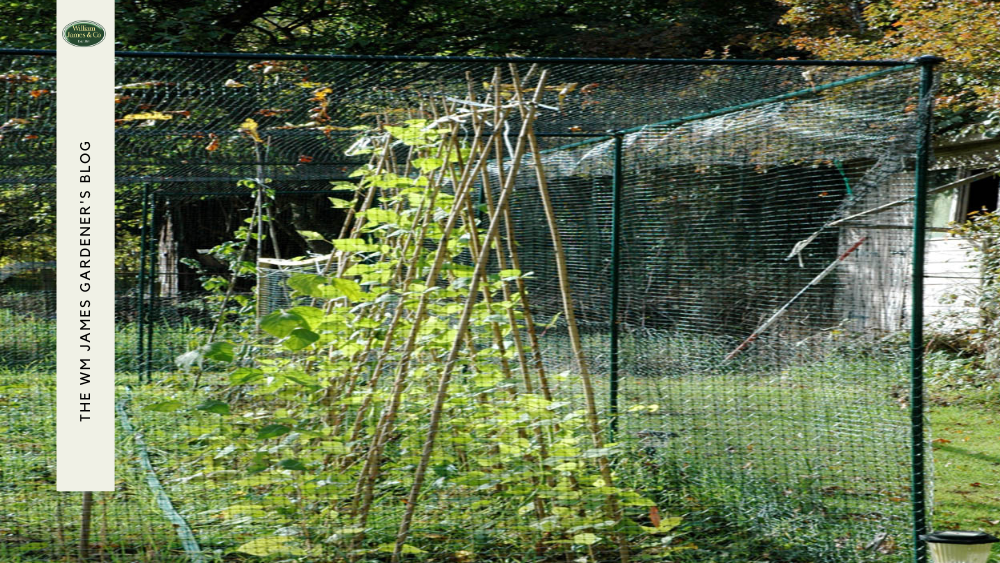We use cookies to make your experience better. To comply with the new e-Privacy directive, we need to ask for your consent to set the cookies. Learn more.
8 Best Vegetables to Grow in May
- Admin
- WM James Gardening Blog
- 11 Mar 2024
-
8views
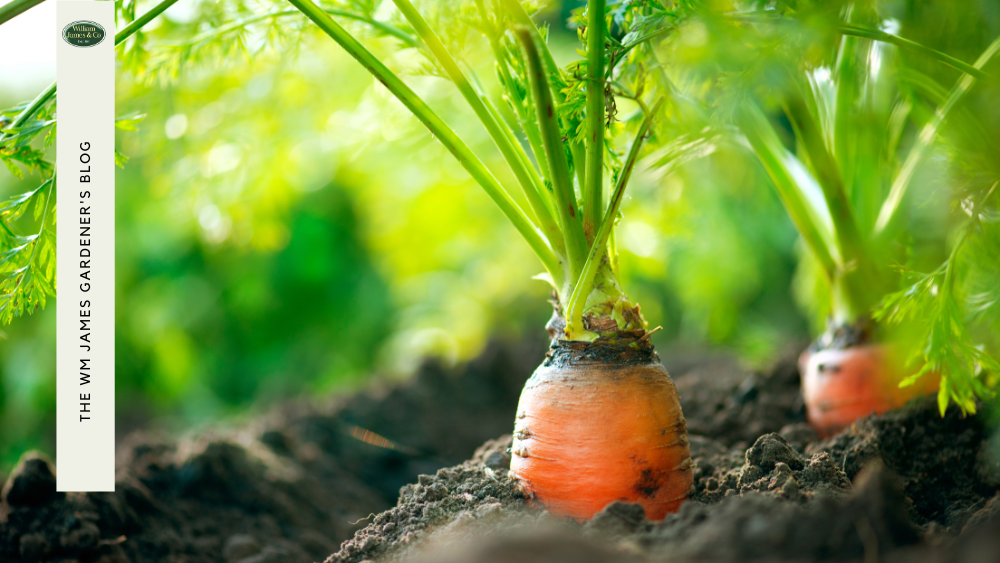
With spring warming up the soil and the frosts of winter a distant memory, May is the ideal time to start planting vegetables for mid to late summer harvest.
Discover the joy of gardening this spring with a selection of the finest vegetables to cultivate in your garden come May.
Whether you're drawn to the earthy flavours of delicious root vegetables or the refreshing crunch of crisp salad greens, we’ve compiled a list of 8 of the best vegetables to plant during this vibrant season.
|
In this guide, we cover:
|
Eating With The Seasons: A Guide To UK Seasonal Fruit & Veg
8 Easiest Vegetables to Plant in May
In the UK, May is the perfect time to plant a variety of vegetables.
To simplify things, we've selected 8 of the easiest vegetables for your vegetable garden, ensuring a bountiful harvest of delicious veggies from late summer through autumn.
| Vegetables to Grow in May | When to Harvest |
|---|---|
| Sprouting Broccoli | From January to May |
| Carrots | 12-16 weeks after sowing |
| Rocket | 4-6 weeks after sowing until November |
| Courgette | When they reach 4-5 inches long |
| Beetroot | When the root is golf ball sized |
| Cucumber | When they reach 6-9 inches long |
| French & Runner Beans | When pods are 6-8 inches long |
| Sweetcorn | 6 weeks after cobs appear and silks turn brown |
1. Sprouting Broccoli
Planting sprouting broccoli in May is great for several reasons. This period marks the transition from spring to summer, providing the perfect climate for sprouting broccoli to thrive.
The cooler spring temperatures ensure that the plants can establish themselves without the stress of midsummer heat, while the lengthening days offer ample sunlight for growth.
To achieve the best results, it's essential to prepare the soil with plenty of organic matter to retain moisture and nutrients. Plant the sprouts in a spot that receives full sun to partial shade, and ensure regular watering, especially as the weather warms.
2. Carrots
Planting carrots in May is a great idea primarily due to the soil's warmth, which is crucial for germinating carrot seeds.
The moderate temperatures of late spring mean the ground isn't too cold, fostering an environment where carrots can sprout effectively.
For carrots to flourish, they require well-drained, sandy soil free from stones; this ensures their roots can grow deep and straight without obstruction.
- Before planting, work the soil thoroughly
- Remove any debris and break up large clumps
- Sow the seeds thinly across drills spaced around 5cm apart to prevent overcrowding (our Burgon & Ball Seed & Plant Spacing Ruler is ideal for this!)
- Ensure the soil is kept evenly moist but not waterlogged
With careful attention to meeting these conditions, your carrot crop will be ready for harvesting in late summer to early autumn, offering a sweet, crunchy bounty.
3. Rocket
Planting rocket in May is an excellent decision for those looking to add a peppery flavour to their salads throughout the summer.
This period is ideal as rocket prefers cooler temperatures to initiate growth but still needs longer daylight hours to develop fully. Gardening during this time minimises the risk of bolting, which can occur if planted during the hotter months.
For the best results, sow in well-drained soil rich in organic matter. Choose a sunny to partly shaded site to ensure healthy growth. Here are some steps to follow:
- Loosen the soil and enrich it with a good amount of compost or well-rotted manure to improve fertility
- Sow the seeds thinly in rows, covering them lightly with a layer of soil. If you prefer, you can also scatter the seeds for a more natural growth pattern
- Keep the soil moist but not waterlogged, as rocket seeds require consistent moisture to germinate effectively
If you need to create partial shade, consider using shade netting or planting taller plants nearby to provide some cover.
Our Windbreak & Shade Netting is a great option for protecting your rocket crops from harsh sun exposure. You can choose your desired size and easily set it up in your garden using ties and pegs.
4. Courgettes
May is a great time to plant courgettes due to the warming soil and improving weather conditions, which are essential for courgette seeds to germinate and grow.
This period provides the ideal balance of warmth and light, critical factors for the development of strong, healthy courgette plants.
To achieve the best results with courgettes…
- Select a sunny spot, as courgettes thrive in direct sunlight
- Prepare the soil by incorporating plenty of organic matter to ensure it’s fertile and well-draining
- Sow seeds directly into the ground, placing them about 2cm deep. It's best to plant them in groups of two or three, spaced about 90cm apart using a plant spacing ruler
- Water regularly, ensuring the soil remains moist but not waterlogged
- Mulch around the plants to help retain soil moisture and suppress weeds
5. Beetroot
This month typically hosts a blend of mild temperatures and moderate rainfall, primed to assist in the germination and early growth stages of beetroot.
The soil has warmed up sufficiently from the spring sun yet retains enough moisture to aid in root development without the need for excessive watering.
To cultivate spectacular beetroots, you need to:
- Choose a sunny spot with well-draining soil
- Loosen the soil and enrich it with compost to ensure it's fertile and airy
- Space seeds approximately 2cm deep and 10cm apart to allow ample room for growth
- Water consistently but take care not to over-saturate
By planting beetroot in May, gardeners can anticipate harvesting their vibrant, tasty bulbs from mid-summer onwards, making them a delightful addition to salads, roasts, and pickles.
6. Cucumber
Planting cucumbers in May is both strategic and rewarding for the keen gardener. The cucumber plants benefit from the longer days and the warmer, yet not too hot, weather conditions typical of late spring.
These conditions are ideal for germinating cucumber seeds and for the young plants to establish a strong root system.
To ensure thriving cucumber plants:
- Choose a sunny, sheltered spot, as cucumbers love warmth but can be sensitive to wind
- Prepare the soil by incorporating plenty of organic matter to retain moisture and nutrients
- Sow the seeds directly into the ground or start them indoors if the nights are still a bit chilly, and transplant them when the risk of frost has passed
- Provide ample space for each plant to avoid overcrowding
Learn How to Grow Container Vegetables
7. French & Runner Beans
May is the optimal time for planting French and runner beans, as these beans flourish in the warm soil conditions the month brings.
By this time, the risk of frost has significantly diminished, creating a safe environment for the seeds to germinate and grow.
French and runner beans require a stable and warm climate to thrive, and the increase in daylight hours during May encourages vigorous growth and development of the plants.
To ensure a bountiful harvest, these beans should be planted in a sunny spot with support for the climbing varieties, such as runner beans, to grow upwards.
We recommend using Bamboo Canes For Plant Support Structures to keep your runner beans growing straight and healthy. These canes can be pushed straight into the soil behind the plants.
Encourage the beans to grow around the canes by shaping the stems and using Biodegradable Jute Twine. For a less hands-on approach, Pea & Bean Netting For Plant Support can help keep your beans growing tall and proud throughout the season.
8. Sweetcorn
Planting sweetcorn in May is ideal, as this is when the soil reaches the perfect temperature for sweetcorn seeds to germinate successfully.
Sweetcorn requires warmth and lots of sunshine to develop its sweet, juicy kernels, making late spring the perfect starting point for this crop.
For the best results with sweetcorn, make sure you plant them in a sunny location with rich soil. The seeds should be planted in blocks rather than rows to help the pollination process.
Make sure you keep an eye out for pests, especially birds that are attracted to the cobs.
Bird netting can be a real lifesaver for protecting your plants from pecking birds!
We supply our bird netting in multiple sizes and meshes, and they’re great at preventing beaks from damaging your crops, without causing any harm to the birds themselves.
We recommend our 20mm Garden Bird Netting for all-round protection, as it’s not only lightweight and easy to handle but also provides efficient coverage for a variety of plants.
Our Top Tips for May Sowing Success
If you're a first-time gardener or you struggle with spring planting, we've brought together all the advice you need to help you get ahead of the unpredictable weather conditions in the UK and ensure sowing success with your May planting.
Utilise your Greenhouse
Utilising your greenhouse in May can significantly improve sowing success.
The controlled environment shelters seedlings from unpredictable spring weather, providing consistent warmth and light. This accelerates germination and strengthens plants against outdoor transplant shock.
Starting seeds in a greenhouse ensures a head start for your vegetables, making it an indispensable tool for any gardener aiming for a bountiful harvest.
Cuttings vs Seeds
Choosing between cuttings and vegetable seeds can impact your garden's success, particularly in the volatile British weather.
Seeds, while offering a wider variety of plants, may struggle in colder springs, requiring patience and careful tending.
Conversely, cuttings can establish quicker, being more resilient to fluctuating conditions, but are limited to plants you or friends already grow.
Understanding your local climate and plant preferences is key to deciding between these two methods for your garden.
Invest in a Garden Fruit Cage
Fruit cages effortlessly protect your plants from birds and pests, all while ensuring they still get the airflow necessary for healthy growth. Their robust frame, covered by fine mesh, shields plants from harm without hindering natural germination for a bumper crop.
For those cultivating climbers or managing a larger space like an allotment or expansive vegetable garden, our walk-in fruit cages are an excellent choice! They feature a convenient 1m-wide door, allowing easy access to tend to your plants without the hassle of rolling the netting up.
For smaller gardens or vegetable patches, low vegetable cages offer sufficient protection. They're designed for easy removal, making plant care simple and straightforward.
Summary: Home-Grown Vegetables in May
May marks a pivotal moment in the gardening calendar, offering a golden opportunity to sow a variety of vegetables that will enrich your garden and dining table.
Whether you're planting roots, leaves, or fruits, the effort you invest now promises a rewarding harvest.
For more insights and to ensure year-round gardening success, don't forget to explore the rest of our monthly planting guides.
Read 8 Best Vegetables to Grow in June
FAQs
Can I Plant Fruits in May?
Yes, May is an excellent time to plant certain fruits. Hardy varieties like strawberries, raspberries, and blueberries can be planted now, taking advantage of the warmer soil for root establishment. Ensure you choose a sunny spot and prepare the soil with organic matter for the best results.
What is the Best Crop to Grow in May?
If your green-fingered Dad is getting older or has some mobility issues, it's important to make sure any gardening gifts are accessible to him. We have a fantastic range of garden tools with long handles that help to reduce the amount of bending and kneeling in the garden. These tools include spades, forks, shears, and trowels.
Is May Too Late for Tomatoes?
No, May isn't too late for tomatoes. In fact, it's an ideal time to plant them, especially if you're starting with tomato seedlings rather than seeds. Planting in May allows the soil to warm up, providing optimal conditions for tomato plants to establish roots and thrive. Ensure they're placed in a sunny spot and protected from late frosts for the best yield.
Is May Too Late to Sow Seeds?
May is not too late to sow seeds. Many vegetables, like peas, beans, and squash, can be sown directly into the soil this month. It's perfect for quick-growing salads and herbs, too. Just ensure you're choosing seeds suitable for your local climate and the current weather conditions.

